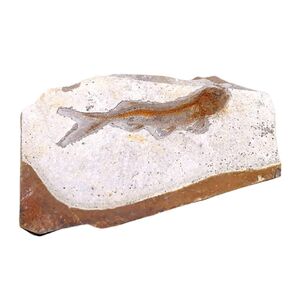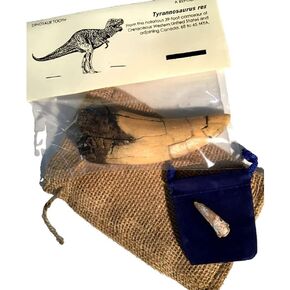- Shopping, made easy.
- /
- Get the app!
Fossil Horn Coral Over 300 Million Years Old What are they? Fossil corals are the preserved remains or traces of ancient corals. If we're talking about corals that are over 300 million years old, we're delving into the late Paleozoic era, a time well before the age of the dinosaurs. How do they form? Life and Death of Coral: Corals are marine animals that often live in colonies, creating hard external skeletons of calcium carbonate. Over time, as individual coral polyps die, new ones grow atop the old skeletons, forming massive structures called reefs. Sedimentation: When these corals die, their skeletal remains settle on the seafloor. Over time, layers of sediment (like sand, silt, and clay) accumulate on top of these remains. Burial and Preservation: As more and more sediment accumulates, the pressure on the layers below increases. This compaction, combined with the water being squeezed out and the minerals present, starts the process of turning these sediments and the coral remains within them into rock. This is when the coral skeletons begin their transformation from being mere skeletal remains to becoming fossils. Mineral Replacement: Over long geologic timescales, the original calcium carbonate of the coral skeleton might get replaced by other minerals, like silica or pyrite, further solidifying its fossilized state. Erosion and Discovery: Over millions of years, tectonic activity, and natural erosive forces like wind and water can expose these ancient rock layers. As these rocks erode, the fossilized coral within can be revealed, providing us with a glimpse into the ancient marine environments of our planet. These fossil corals, especially ones over 300 million years old, are not only beautiful but are also valuable records of Earth's history, offering insights into past climates, oceanic conditions, and the evolution of life.
 3cm Paleozoic Bivalve Fossil Replica
KWD 5
3cm Paleozoic Bivalve Fossil Replica
KWD 5
 Scicalife Paleontology Fish Fossil Specimen Stone Ornaments for Basic Paleontology Biological Science Education Laboratory Supply(Random Size)
KWD 8
Scicalife Paleontology Fish Fossil Specimen Stone Ornaments for Basic Paleontology Biological Science Education Laboratory Supply(Random Size)
KWD 8
 DINOSAURS ROCK Tyrannosaurus Rex Tooth Replica - T-Rex - Plus Genuine Fossil Spinosaurus Dinosaur Tooth
KWD 10.500
DINOSAURS ROCK Tyrannosaurus Rex Tooth Replica - T-Rex - Plus Genuine Fossil Spinosaurus Dinosaur Tooth
KWD 10.500
 Acxico 5pcs Amber Fossil with Insects Samples Stones Crystal Specimens Home Decorations Collection Oval Pendant (Green Armor + Scorpion + Flower Butterfly + Wasp + Spider)
KWD 5.500
Acxico 5pcs Amber Fossil with Insects Samples Stones Crystal Specimens Home Decorations Collection Oval Pendant (Green Armor + Scorpion + Flower Butterfly + Wasp + Spider)
KWD 5.500